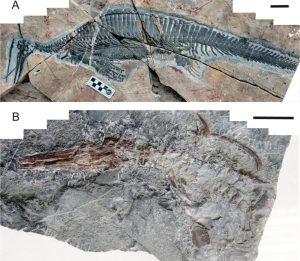
A combined team of paleontologists and geoscientists from China University of Geosciences and Hubei Geological Bureau, both in China, working with a colleague from the University of Bristol, has found more evidence suggesting that the ancient marine reptile Hupehsuchus nanchangensis, was a filter feeder.
In their paper published in the journal BMC Ecology and Evolution, the group describes how they compared newly found Hupehsuchus skulls to those of modern baleen whales and other creatures, and what they found by doing so.
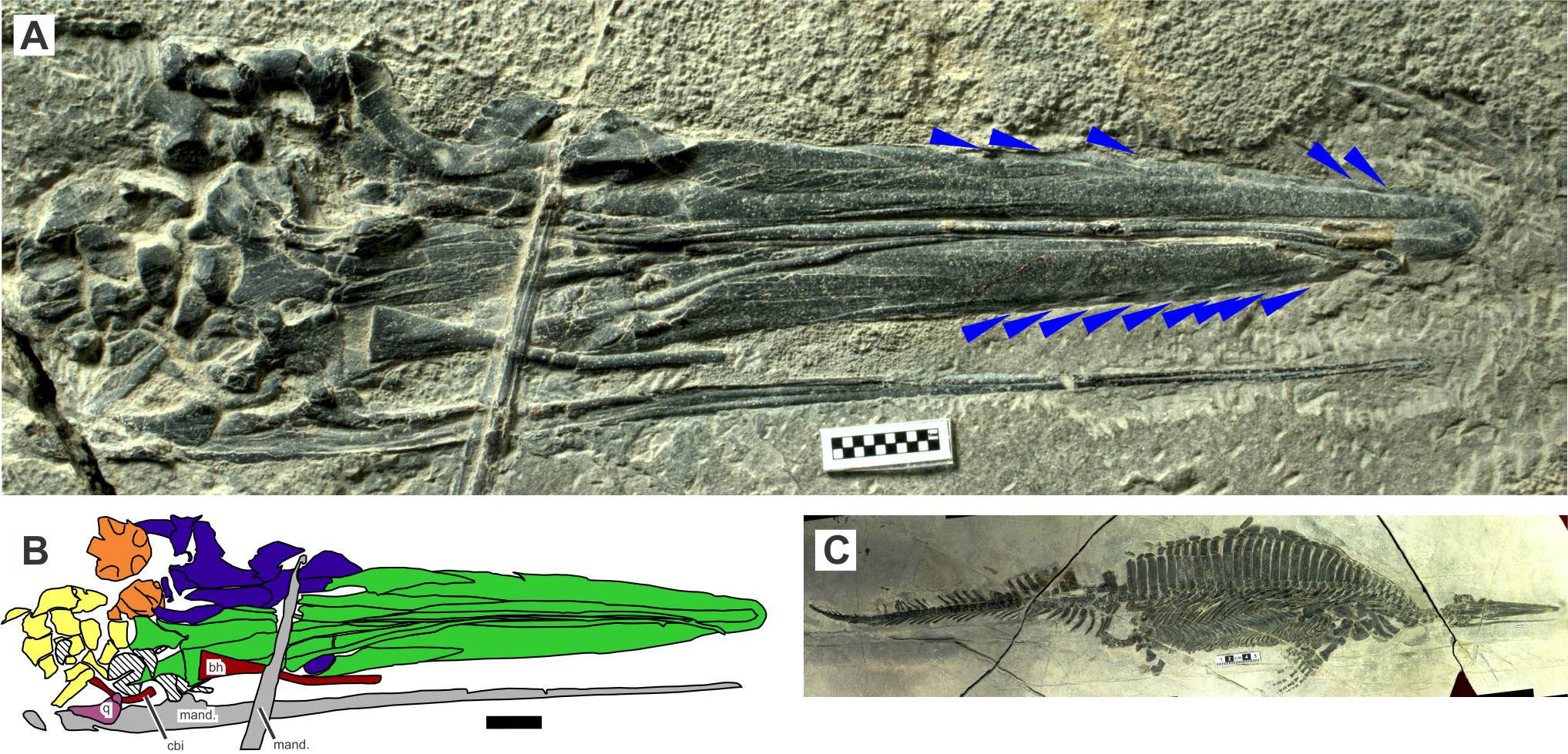
Approximately 252 million years ago, the Earth experienced volcanic eruptions that emitted so much material into the atmosphere that approximately 95% of all marine species were killed off. Called the “great Dying,” the sudden change in climate led to changes in the creatures that survived. Once such creature evolved over a few million years into Hupehsuchus.
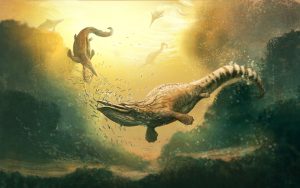
First discovered in 1972, in Hubie Province in China, Hupehsuchus, has remained a bit of a mystery. Unlike most other marine creatures of its time, it had no teeth and a skinny snout.
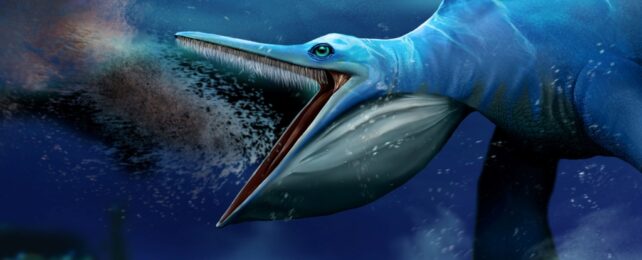
Such characteristics would have made it impossible for the creature to survive by catching and eating smaller prey, suggesting that it might have been a filter feeder—like modern baleen whales. But until now, evidence was lacking. In this new effort, the researchers obtained and studied two Hupehsuchus fossil specimens that had recently been found by other researchers.
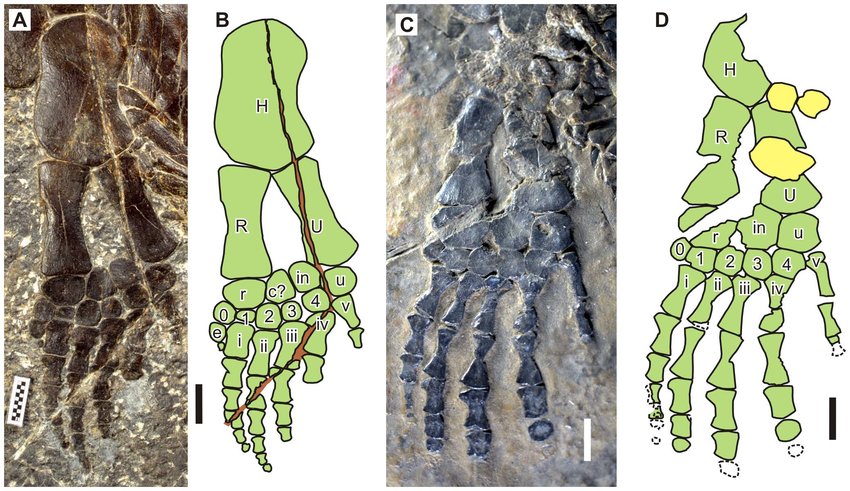
One of the fossils was of a whole skeleton, the other was of a head, neck and clavicle. Both allowed for viewing the skull from above, something that had not been available with other Hupehsuchus fossils that have been found. Neither of the fossils had any evidence of a baleen or something resembling one, which was not a surprise—in modern whales, they are made of soft tissue which would not fossilize well, or at all.
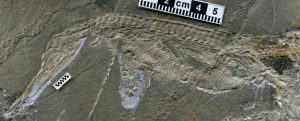
Undaunted, the researchers sought to find evidence another way. The compared the new fossils with skulls from 130 modern aquatic animals, including both those that were filter feeders and those that were not. In so doing, they tested how the new skulls aligned with the skulls of modern creatures and found the closest fit was with modern baleen whales, suggesting that Hupehsuchus was likely a filter feeder.